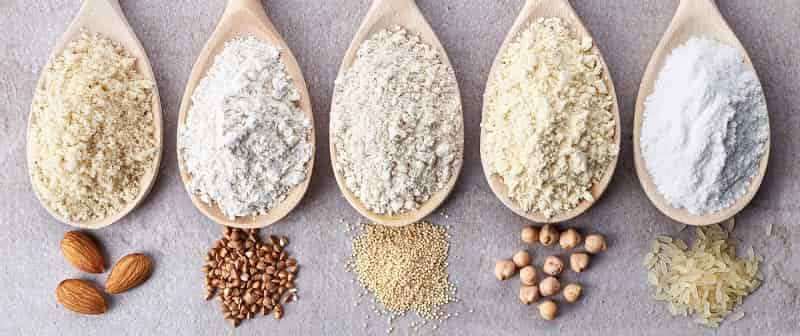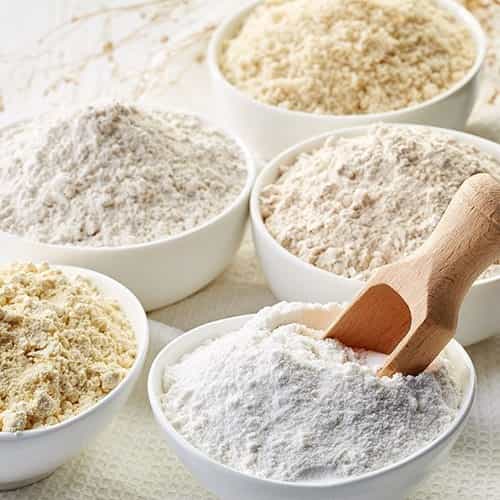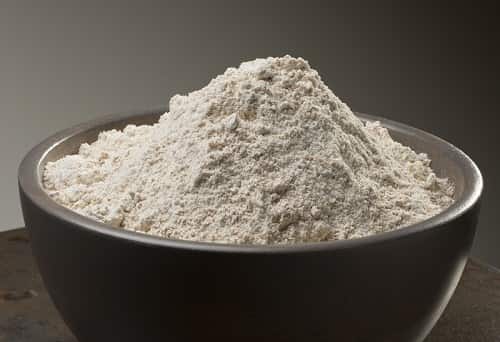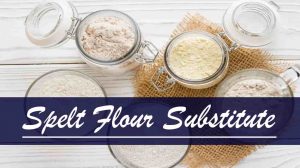One of the first things that anyone who bakes knows to have on hand is flour.
And any experienced baker also knows that it is much better to use spelt flour for any recipe.
Being much more effective than most other kinds of flour, spelt flour is easily the optimal base for making any baked recipe.
This does not mean that all-purpose flour does not have its place. If you are out of options, there is no shame in using all-purpose flour.
However, you should know that spelt flour is the better choice.
There is only one problem.
Spelt flour can be difficult to come across compared to other kinds of flour.
It is also costly, and you will need quite the budget for spelt flour to be part of your pantry.
However, like with other effective cooking and baking ingredients, spelt flour has proper substitutes that are a little more common and a little easier on your budget.
What makes spelt flour so effective?
The concept of flour seems very simple: It’s nothing more than powder borne from grains that are used to make nearly all baked goods.
How much more complicated could it possibly be?
It turns out that there actually is a lot more to flour than being grain based powder.

While the function of nearly any kind of flour is the same, the properties of different kinds of flour is where all the differences exist.
Something that generic flour can do is make its end products much more dense and heavy than they should be.
This is especially true if you use too much of it in the recipe. If you ever encounter a bakery product that has a lot of dough in its texture, it is probably because whoever baked it used too much flour.
Using spelt flour solves this problem somewhat.
The main thing that sets spelt flour apart from most other flour products is that it has a much lighter texture than other kinds of flour. This not only results in an end product that isn’t nearly as heavy or dense, but it also allows a little more room for error.
If you use too much spelt flour when baking, your end product will contain a little less dough in the texture.
Spelt flour is not gluten free. There are very few flour products that are gluten free. However, because of how light spelt flour is, anybody who is significantly allergic to gluten can probably still enjoy things that are baked with spelt flour because the overall gluten content in it is much lower than in other flour products.
The gluten content in spelt flour is lower because it has a little more protein content than other types of flour. This is also something that is in very high demand, especially for something like flour.
Other flour products are also bland, not really offering any real flavor. Spelt flour has a mild, slightly nutty and slightly sweet flavor. When you bake with it, you will notice a difference.
Those are the three qualities that you should be looking for when it comes to seeking out substitutes for spelt flour: A lighter texture, slightly higher protein contents, and a little bit of flavoring.
Anything that contains one of these three is a suitable substitute for flour.
Substitutes for spelt flour
One thing that you should keep in mind is that substitutes are not perfect, and spelt flour is no exception.
Some substitutes for spelt flour could be flavorful but they may lack the lighter texture, and vice versa.
This is something that you will need to accept when looking for a substitute for spelt flour.
In any case, you should be able to find a proper substitute among these when it comes to looking for something that will replace the spelt flour that you just cannot seem to procure so easily.

The problem in looking for a substitute for spelt flour is that spelt flour in and of itself is a substitute for wheat flour. There are many situations where it is used in place of wheat flour.
Because of this, the reverse is also true, and wheat flour can also be used in place of spelt flour. While you will not enjoy the benefits of spelt flour when doing this, it is still an option nonetheless.
Kamut flour is virtually the same as spelt flour, only it is even more flavorful and has even more protein content than spelt flour.
If you wish to swap out spelt flour for kamut flour, you’ll need to use a little more water in your recipe because it can dry out a little faster than spelt flour.
Amaranth flour is one of the only truly gluten free flour products in existence. It contains the same kind of properties of spelt flour as well. It has the same kind of protein content as spelt flour and also has a semblance of fiber content as well, which is rare in flour.
The problem with amaranth flour is that it cannot be consumed raw. You can only use amaranth flour in baked goods that are completely cooked.
Another flour product that is nearly the same as spelt flour is barley flour. Barley flour is light and contains very little gluten, just like spelt flour.
The only difference between these two is that barley flour is a lot more flavorful than spelt flour. You may not be able to use barley flour in the same way as you would spelt flour.
Spelt flour is the de facto optimal kind of flour that you can use in nearly any baking recipe. There is nearly no other kind of flour that beats it.
While it is one of the best flour products that you can bake with, spelt flour can be difficult to come by and can be a little costly.
Fortunately, a handful of substitutes for spelt flour exist. These substitutes contain the same properties as spelt flour, and they are just as effective.
If you do not have access to spelt flour, consider these substitutes. You will not be disappointed.




